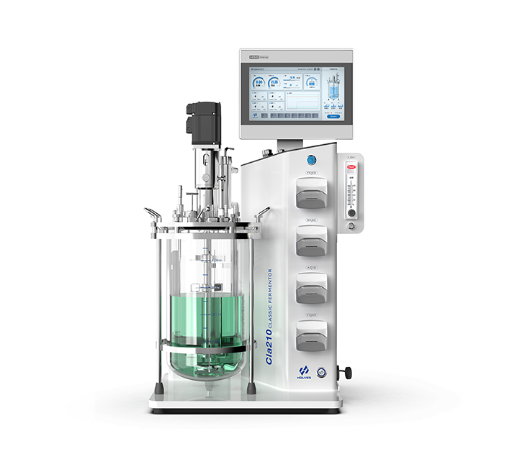Let's first understand the different types of fermenters.
- Classified according to the needs of microbial growth and metabolism.
Anaerobic fermenter: Anaerobic fermenter is suitable for the fermentation of acetone butanol, alcohol, beer, lactic acid and other anaerobic products. Their common point is that they do not need ventilation.
- Classification according to the characteristics of fermenter equipment.
Non mechanical stirring ventilated fermenter: including circular air lift and liquid lift fermenter, as well as non circular tube type and jet type fermenter.
These two types of fermenters use different means to fully mix the gas, solid and liquid phases in the fermenters, so as to meet the oxygen demand of microbial growth and product formation.
- Classification by volume
This is the classification of fermenters. The main uses of fermenter vary greatly according to the varieties, processes and application fields of fermenter.

We introduce several common cleaning methods.
Fixed cleaning ball: The traditional fixed cleaning ball is the most commonly used cleaning device. The fixed cleaning balls have different types, sizes and cleaning capacities. The fixed cleaning balls can spray the cleaning solution to the tank wall for simple fixed cleaning.
Rotating cleaning ball: The way and effect of rotating cleaning ball is better than that of traditional fixed cleaning ball. The nozzle of the rotary cleaning ball sprays on the tank wall in an irregular manner. In terms of the combination of cleaning method and mechanical impact force, it uses less water, consumes less chemicals and can remove residues in a short time than the fixed cleaning ball.
Double cycle cleaner: double cycle cleaning can effectively clean the fermentation tank. The spraying forms include middle up spraying, middle down spraying, full spraying, spraying within 360 degrees, high cleaning efficiency, low water consumption, energy consumption and chemical agent consumption; Sanitary structure, self-lubricating with cleaning fluid, can wash the tank at any angle.
The fermenter still needs to be cleaned after being used for a period of time. Cleaning the fermenter can ensure the product quality and prolong the service life of the fermenter equipment.
The outstanding difference between fermenters and other industrial equipment is the high requirements for pure seed culture, almost to a very demanding degree. Therefore, the tightness of the fermenter, the operation of a high degree of reliability is a significant feature of the fermentation industry. Modern fermentation industry in order to obtain greater economic benefits, fermenter tend to be more large-scale and automated development.
More questions to solve?
More Questions
More Questions
[VIRTUAL Address] HOLVES Su310 intelligent stainless steel fermenter is a new generation of pilot and small-scale production equipment, integrating hardware innovation and intelligent control. In the pharmaceutical industry, stainless steel fermenters are crucial for produ...
[Ceramic Membrane Filtration] Ceramic membrane filtration is a physical separation process that uses ceramic materials with porous structures to separate particles, microorganisms, and dissolved substances from liquids....
[Tangential Flow Filtration] The Application of Tangential Flow Filtration Cassettes...
[Four-Piston Diaphragm Pumps] What is a Four-Piston Diaphragm Pump? How Does a Four-Piston Diaphragm Pump Work? What Are the Key Advantages of Four-Piston Diaphragm Pumps?...
[Photobioreactor] Photobioreactors are specialized cultivation systems designed to grow photosynthetic microorganisms such as microalgae, cyanobacteria, and other photosynthetic cells under controlled environmental conditions. Lab-scale photobioreactor systems serve as...
[Fermenters] Optimizing Fermenters for Enhanced Production...
[Bioreactors] Biological Reactions in Bioreactors: Advanced Solutions for Efficient Fermentation...
[Tangential Flow Filtration] Tangential Flow Filtration (TFF) is a separation process widely used in various industries, especially in biopharmaceutical manufacturing, water treatment, and chemical processes....
[Small Spray Dryers] Learn the Basics of Small Spray Dryers...
[Fermenter] You can find the answer to the question about fermenter feed supplement……...
